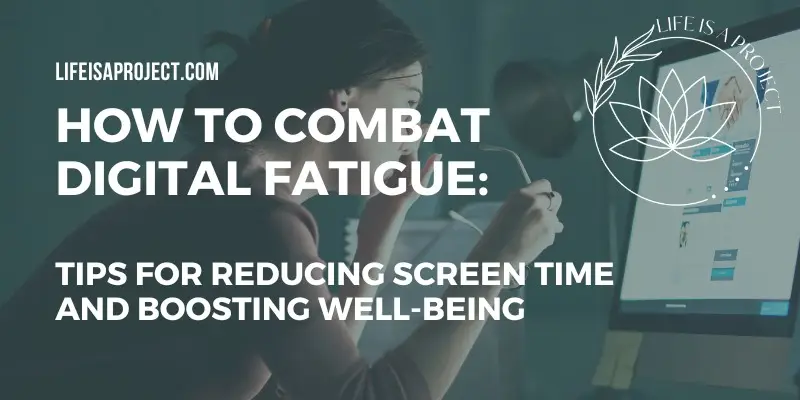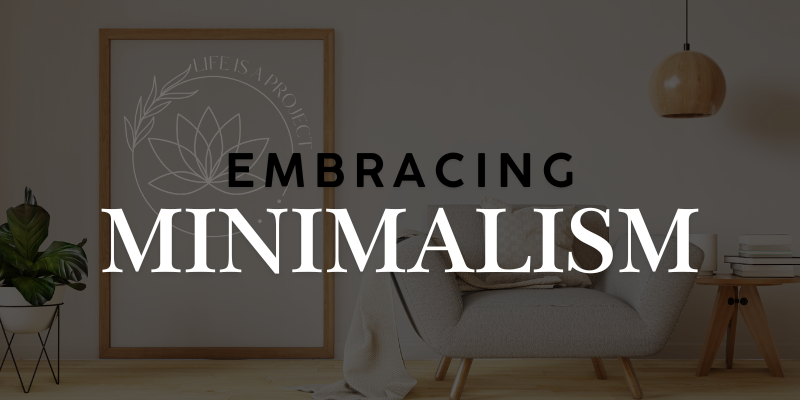Screens are an unavoidable part of daily life. From work emails and video calls to social media and streaming shows, we spend a significant portion of our day staring at screens. While technology offers many conveniences, it can also lead to digital fatigue—a state of mental exhaustion caused by prolonged screen time.
If you’ve ever felt drained after a long day of digital interactions, you’re not alone. Let’s explore how you can combat digital fatigue with practical tips for reducing screen time and boosting your overall well-being.
The Reality: The Rise of Digital Fatigue
Digital fatigue has become increasingly common as our lives grow more intertwined with technology. With many of us working from home, participating in virtual meetings, and relying on screens for entertainment, it’s easy to feel overwhelmed by the constant stream of digital stimuli. Symptoms of digital fatigue include eye strain, headaches, difficulty concentrating, irritability, and a sense of being “wired but tired.”
The key to combating digital fatigue lies in finding a balance between screen time and offline activities. By setting boundaries and making mindful choices about how we interact with technology, we can reduce digital overload and improve our mental and physical health.
Why Reducing Screen Time Matters
Excessive screen time can negatively impact your well-being in several ways:
- Affects Sleep Quality: Blue light from screens interferes with the production of melatonin, a hormone that regulates sleep. This can lead to difficulty falling asleep and poor sleep quality.
- Increases Stress and Anxiety: Constant notifications, emails, and social media can contribute to a heightened sense of stress and anxiety.
- Impacts Physical Health: Prolonged screen time often means long periods of sitting, which can lead to poor posture, muscle strain, and a sedentary lifestyle.
- Reduces Attention Span: Multitasking between devices and digital content can decrease your ability to focus and maintain attention on a single task.
Practical Tips to Combat Digital Fatigue
Ready to reclaim your time and reduce digital fatigue? Here are some practical strategies to help you cut back on screen time and boost your overall well-being:
1. Set Screen Time Boundaries
One of the most effective ways to combat digital fatigue is by setting clear boundaries around your screen time. This might mean establishing no-screen zones or designated times of day when screens are off-limits.
- Quick Tip: Implement a “digital curfew” by turning off all screens at least an hour before bed. Use this time for reading, journaling, or winding down with a relaxing routine. Apps like Screen Time (for iOS) and Digital Wellbeing (for Android) can help you monitor and manage your screen use.
2. Incorporate Digital Detoxes
A digital detox involves taking a break from screens to reset and recharge. This doesn’t have to be an extended period—short, regular detoxes can make a significant difference.
- Quick Tip: Start with small detoxes, like unplugging during meals or setting aside one screen-free day each week. Use this time to engage in offline activities like hiking, cooking, or spending quality time with loved ones.
For more on digital detoxing, check out Digital Detox by the Mindful Techie.
3. Practice the 20-20-20 Rule
Eye strain is a common symptom of digital fatigue. The 20-20-20 rule is a simple yet effective strategy to give your eyes a break from screens.
- How to Do It: Every 20 minutes, look away from your screen at something 20 feet away for at least 20 seconds. This helps reduce eye strain and gives your eyes a chance to reset.
For more tips on eye care, visit The American Optometric Association.
4. Create a Tech-Free Morning Routine
How you start your day sets the tone for the rest of it. Avoid jumping straight into screens first thing in the morning. Instead, create a tech-free morning routine that prioritizes self-care.
- Quick Tip: Start your day with activities that don’t involve screens, such as stretching, meditating, or enjoying a healthy breakfast. Waiting at least 30 minutes to an hour before checking your phone or emails can help reduce digital overwhelm.
For ideas on morning routines, explore Mindful Morning Routines by Mindbodygreen.
5. Prioritize Real-World Connections
While technology makes it easy to stay connected, it’s important to nurture face-to-face interactions as well. Spending time with friends and family in person can boost your mood and reduce the sense of isolation that screens can sometimes bring.
- Quick Tip: Schedule regular in-person meetups, phone calls, or outdoor activities with loved ones. Even short interactions can have a positive impact on your well-being.
For more on building real-world connections, check out Greater Good Science Center’s Guide to Social Connection.
6. Set Up Your Workspace for Comfort
If you spend a lot of time on screens for work, make sure your workspace is set up to minimize strain. Proper ergonomics can help reduce physical discomfort and improve your overall screen experience.
- Quick Tip: Position your screen at eye level to avoid neck strain, use a chair with proper back support, and take regular breaks to stretch. Consider using blue light filters or glasses to reduce eye strain from screens.
For tips on creating an ergonomic workspace, visit The Mayo Clinic’s Ergonomics Guide.
7. Engage in Mindful Tech Use
Mindfulness isn’t just for meditation—it can also be applied to how you use technology. Mindful tech use involves being intentional about when and how you engage with screens, helping you make more conscious choices.
- Quick Tip: Before reaching for your phone or opening a new tab, pause and ask yourself if it’s necessary or just a habit. Set intentions for your screen time, whether it’s to connect, learn, or relax, and stick to those intentions.
For more on mindful tech use, explore Mindful Technology Use by Mindful.
8. Declutter Your Digital Space
A cluttered digital space can contribute to feelings of overwhelm. Taking time to organize your digital environment can make your screen time more productive and less stressful.
- Quick Tip: Regularly clean up your desktop, unsubscribe from unnecessary emails, and organize your apps and files. Reducing digital clutter can help you feel more in control and focused.
For guidance on digital decluttering, visit The Minimalists.
Overcoming Common Digital Fatigue Challenges
Reducing screen time can be challenging, especially if your work or daily routine heavily involves screens. Here’s how to tackle some common obstacles:
- “My job requires me to be on screens all day.” Make the most of your breaks by stepping away from your screen, getting fresh air, or doing a quick stretch. Incorporate non-screen-related tasks whenever possible.
- “I use screens to relax.” Look for alternative ways to unwind that don’t involve screens, such as reading a book, doing a puzzle, or practicing a hobby.
- “I’m addicted to my phone.” Start by identifying your main triggers for excessive phone use, and set small, manageable goals to reduce your screen time. Use apps that monitor and limit your usage.
Conclusion: Finding Balance in a Digital World
In our increasingly connected world, it’s more important than ever to find a healthy balance with technology. By taking steps to reduce digital fatigue, you can improve your well-being, boost your productivity, and enjoy a greater sense of peace and clarity.
Remember, it’s not about cutting out screens entirely—it’s about being mindful of how you use them and making intentional choices that support your overall health. So set those boundaries, take regular breaks, and make time for the offline world. Here’s to finding balance and reclaiming your well-being in the digital age!



